The too-hard bin

Jodie Lea Martire reaches the end of her exhaustive examination of Australia’s recycling industries, and with it, the things we can’t recycle.
Welcome to the final piece in our epic recycling series! To conclude our examination of modern recycling, we’re looking at things that are intrinsic to modern life, but that our existing recycling systems cannot handle. These are the items that end up in the too-hard bin, with a lid that’s neither red, nor yellow, nor green—perhaps a deep, opaque black.
According to waste-management company Cleanaway, Aussies got greener during the COVID pandemic and those long, long, lockdowns in the southern states, and 42% of us became more concerned about the waste we generated. But the bad news is that a third of Australians still find recycling confusing, which is no surprise when you’re faced with things like empty shampoo bottles (yellow bin), balloons (red bin) and broken crockery (good ol’ landfill, unless you’re into mosaics).
Before you start scavenging for treasure in this article about trash, mostly in alphabetical order, I want to give a shout-out to some excellent recycling initiatives. [Links to all these initiatives’ websites are in the Resources section at the end of this articl e. — Ed.] Planet Ark’s Recycling Near You tells you what recycling systems are available for what items in your state or region. Private company TerraCycle offers several Zero Waste Boxes for all waste or for specific products (e.g., media storage, action figures, baby goods). Banish and Upparel do similar things for cosmetic/bathroom items and for clothing and footwear, respectively.
And finally, the Australian Council of Recycling (ACOR) has developed an AI-driven smartphone app to help consumers learn how to recycle over 4000 products. Take a photo of your mystery item, turn your location tracking on, and Recycle Mate tells you where to toss it. What a time to be alive!
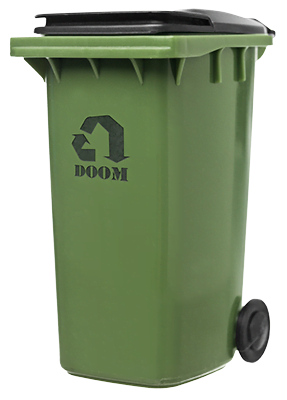
What’s in the black bin?
Anyway, with all that said, what’s in the black bin of doom? Let’s lift the lid gently and have a peek at what’s inside…
Chemicals
Chemical waste—for the garden, as pesticides, in cleaning products—should not go in the red or yellow bin. This includes automotive products, oven cleaner, adhesives, varnishes, pool cleaners and rat poison. Don’t rinse these containers out and don’t reuse them! Instead, seal the used container tightly, look for a local disposal depot or check if your council has a chemical clean-up day. (You can also use less-toxic alternatives—bicarbonate of soda, vinegar, borax and salt all play a role—and check that you aren’t attracting pests to your home with an open compost or water container.) Farm chemicals can go through the ChemClear Program, and empty agvet containers through drumMUSTER.
Cigarette butts
Tossed cigarette butts are small but they pollute land and waterways; the NSW EPA estimates that 7 billion butts are littered each year in Australia. Butts include leftover tobacco, tar and over 60 carcinogenic chemicals, while filters are made of cellulose acetate, a plastic made from papers and rayon. Butts can only biodegrade under harsh conditions.
Potential uses for butts [Obligatory lol — Ed.] are to include them as 1% of brick materials, which will save 10% of kiln energy needs, or to incorporate them into industrial recycled plastics like shipping pallets and outdoor furniture. TerraCycle offers solutions for all parts of extinguished cigarettes, filters, cigar stubs, outer plastic packaging, inner foil packaging, rolling paper and ash—but put the box in with your paper recycling.
Coffee pods
Here’s an aneurysm-inducing statistic: almost 50% of Australians have a pod coffee machine at home. If you find their ubiquity hard to understand, you’re not alone. Even their inventor, former Keurig employee John Sylvan, told Canadian broadcaster CBC in 2015 that he finds their popularity “absolutely mystifying”, and that he regrets having unleashed them on the world.
Sadly, the horse has very much bolted: Australians alone use 3 m capsules or pods a day. Sylvan’s CBC interview coincided with Keurig’s pledge to have fully recyclable K-Cups by 2020, a pledge that Sylvan gave short shrift: “I don’t care what [the company] says. You can’t recycle that package.” Has time proven him correct?
Well, despite Nespresso’s 19,000 collection points around the country and the availability of the promised “biodegradable” or “compostable” pods (read that label carefully!), only 10% of pods are recycled in Australia. This adds up to an estimated 8.5 kt a year of aluminium, plastic and coffee grounds caffeinating our landfill. In response, the federal government has granted Planet Ark, Woolworths and Nestlé almost $1m to develop the national stewardship scheme called PODcycle. TerraCycle can also help.
But the best way to reduce pods’ environmental impact is to just not use the damn things. The final word on these goes to Sylvan: “[Using a pod machine] saves 20 seconds of your day. What’s that worth?”
Concrete
If concrete is separated out and broken down into aggregate, it is useful as road base, aggregates and hardstand areas for heavy vehicles and machinery.
Construction waste
This one’s a biggie: in 2018–19, the construction and demolition industries (C&D) created 27 Mt—or 44%—of Australia’s core waste, according to the National Waste Report 2020. This volume has increased 32% since data was collected in 2006–07. However, C&D also has the highest recycling rate at 76%.
This waste stream can include concrete, bricks, rubble, steel, aluminium, plasterboard, timber, glass, carpet, tiles and plastics—even asbestos. Many of these can be dealt with independently: bricks can become pavers or be crushed to provide surfaces for clay tennis courts or baseball diamonds; doors and windows can be installed in other properties; and metals, soil, timber, asphalt, garden organics, plastic and glass can also be extracted and re-used. However, it’s not so easy when they’re jumbled up in a skip.
Cooking oil
Cooking oils, as I’m sure you know, never go down the drain into our grey water—but they can go into compost in small amounts, or into sealed jars in the red bin. Even better, if you’ve used the oil for cooking veggies, you can re-use it a good few times. If you do manage to recycle your oil (try your local council), it can be filtered and re-used in bio-fuel, cosmetics, detergents and stockfeed.
Cork
Cork, most commonly seen on a bottle of wine, is a natural product of the plantation cork tree. Cork is also used as floor tiles, gaskets, dart boards and the inside of hockey and cricket balls, and constitutes reusable green waste. Unfortunately, the Australian cork manufacturer who used to accept donations from charities is no longer doing so—too often wine corks mixed natural and synthetic materials and the quality wasn’t reliable. TerraCycle can help, or try crafting solutions or your own compost bin, chopping them small to serve as mulch, or other programs in your local area.
Glasses
Don’t put your eye wear in the glass bin! (See Renew 156.) Despite their recyclable components (glass, aluminium), spectacles are destined for landfill, but good condition glasses and sunglasses can be passed on to communities where the cost of optometry is prohibitively expensive. Lions Clubs’ Recycle for Sight has been running for over 25 years and accepts donations directly or through optometrists—check if yours participates.
As for contact lenses, they’re made from plastic-type materials such as hydrogel, silicone hydrogel or non-hydrogel variants. They’re also tiny and hard to recycle individually. (Whatever you do, don’t flush them or wash them down the sink!) Blister packs, cardboard boxes and solution bottles should mostly go in your recycling bin, but for lenses themselves, there’s a program by Bausch + Lomb, TerraCycle and Giving Sight. Both users and optometrists can sign up.
Hazardous waste
Hazardous waste recycling and disposal is always a job for the experts; it can’t be imported to or exported from Australia without a license and is subject to the Basel Convention (1992). In 2018–19, Australians produced 7.4 Mt of hazardous waste, 35% of which was contaminated soil; the overall amount of hazardous waste is increasing at 6.3% per year.
The worst offenders in this category are asbestos; our old friend tyres (see Renew 159); greases and oils; paints, resins, inks and “organic sludges”; lead compounds; alkalis; and “animal effluent and residues”. There are also other delights like pesticide, primers, paints, car batteries, oven cleaners and pool chemicals.
In 2018–19, a full 51% of this stream went to landfill, 21% was recycled and 15% treated to reduce or remove the hazard.
Light bulbs
Light bulbs, per the glass recycling article (Renew 156), should not go in the recycling bin, and any that go in the red bin should be wrapped in paper first. Light bulbs and fluorescent tubes should be recycled where possible to avoid mercury and phosphor in our lands and waters, and to not waste the lead, copper and nickel in LEDs. FluoroCycle is a voluntary product stewardship scheme with recyclers in most states who can deal with “mercury-containing lamps” while companies like Ecocycle, some local councils and individual lighting stores also collect a range of bulbs for disposal.
Mattresses
And what about mattresses, so near and dear to our sleeping lives? According to the National Waste Report 2020, Australians dispose of up to 1.8 m mattresses a year, and nearly 1 m end up at the tip. Mattresses are considered “high-volume waste”: they don’t compact well (because of those internal air pockets that make them good to sleep on), and they each occupy 0.75 m3 of landfill space. Instead, spring, foam and ensemble mattresses can be recycled to access their steel (12.5 kg), wood (2 kg) and foam (1.5 kg). Once a mattress is pulled apart for recycling, carpet underlay is made from the mattress’s foam, wadding and latex, while steel springs are melted down and recast for use in construction, infrastructure and appliances. Wooden slats are processed into particleboard, kindling and animal bedding, while husk becomes weed matting and mulch. To recycle your mattress, check out the national product stewardship scheme or social enterprises like Soft Landing—it creates one job for every 35 mattresses collected.
Medical waste
As for most medical waste, don’t attempt it without specialist help. Sharps and syringes must be disposed of in specialist sharps bins at public hospitals, community health facilities or select pharmacies. Diabetes associations and pharmacies also sell sharps containers for home use. As for everyone’s favourite accessory, the face mask, TerraCycle processes those and RMIT researchers have shown that 3 m masks (93 t) plus processed building rubble can make 1 km of two-lane road. But if you have to bin them, snip the straps so they don’t accidentally choke wildlife or marine creatures.
Medications
Out-of-date and unwanted medications cannot be reused or recycled, but they can be tossed appropriately by taking them to any pharmacy—all chemists should be part of the Return Unwanted Medicines (RUM) program. All-aluminium blisterpacks can go into the yellow bin, but metal/plastic packs can only be recycled by TerraCycle at this stage; your pharmacist might have the appropriate bin.
Metal
Overall, 90% of metals are recycled, but that still means 5.0 Mt end up as landfill. Scrap metals, however, shouldn’t go anywhere near your recycling bin. No matter whether it’s aluminium, brass, copper, stainless steel, cast iron, lead, zinc or nickel, get in touch with a local scrap dealer to make sure it’s safely repurposed.
The same goes for pressurised gas cylinders. If it’s cooking gas, liquid air or a diving tank, check with the manufacturer or retailer to find the best place to swap or sell it. Local governments may also offer solutions for household cylinders for LPG, CFC, fire extinguishers and gas.
Thankfully, aluminium and steel cans can both be infinitely recycled in Australia, so always put them out on bin day. Residential metal recycling accepts aerosol cans, empty paint and food cans, foil baking trays, baby formula and cooking oil tins, and petfood cans. Recycled steel cans use 75% less energy to produce than new ones, and recycling aluminium saves 95% of the energy used to create the virgin metal. (Aluminium production is hideously energy hungry: it takes 14 MWh to 16 MWh to produce 1t of aluminium from 2 t of alumina.)
Don’t forget to check for container-deposit schemes (CDSs) that accept aluminium cans, and remember to scrunch your alfoil into a ball so pieces don’t get lost at the recyclers.
Nappies
But whatever you do, please don’t recycle nappies, for children or adults. The same goes for pads and tampons, all of which the government coyly terms “absorbent hygiene products (AHPs)”. Around 2 billion disposable nappies are tossed each year alone, and a total of 148 kt of AHPs go to the tip, along with their recyclable paper, their recyclable plastic, and their biowaste. Currently, the best alternative is to use reusable nappies, reusable pads or period underwear, or silicone cups to catch menstrual blood. The Victorian City of Casey says that each child in cloth nappies keeps around 667 kg of disposable nappies from landfill every year, and Casey and Wyndham have both run nappy and/or sanitary product rebates to change consumer behaviour. The Federal Government is funding an industry stewardship scheme to develop chemical disposal methods, but it doesn’t seem to be in operation yet.

Paint
Interior and exterior household paint is collected by the Paintback scheme to keep it out of waterways; it also collects deck coating, floor paints, primers, undercoats, stains and varnishes. It’s been running since May 2016, and separates tins from paints, and paint solvents from liquid and solid waste. It doesn’t take automotive paints, aerosol paints, resins, thinners, roof patch, tar-based or bitumen-based products, epoxies or glue, or metal coatings. Seek extra help if your paint contains lead!
Paper
A few kinds of paper should be on your alternative recycling radar (see Renew 153). Shredded paper, tissues, napkins and paper towels are all unsuitable for your recycling bin, but they work just fine in your compost or your composting toilet.
Pens
In addition to accepting an array of e-waste items (see Renew 155), Officeworks has also started accepting pens and markers to recycle the plastic from them, and TerraCycle can help too.
Oil
Australians buy motor oils at the rate of 50 ML per year. Thankfully, these can be cleaned and reused. Cleanaway claims to process 150 ML of lubricating oil and oily water each year, which saves 900 k barrels of oil. (One litre of oil can also pollute 1 ML of water.) Check with your local council, your mechanic, or with waste companies for large quantities. The Australian Government runs a mandatory Product Stewardship for Oil (PSO) scheme, which manages and re-refines 50% to 60% of used oils (65% is considered the feasible maximum). A 2021 independent review of the scheme found that it has been successful in achieving its aims “to a large degree”. That year also, the government funded the Australian Packaging Covenant Organisation (APCO) to develop a scheme to recycle used oil containers—very meta, really, to recycle pure fossil fuels housed in processed fossil fuels.
Shoe recycling
At a reader’s request, let’s look at shoe recycling: Australia imports 110 m pairs per year; 25% of these are sports shoes and only 1% are recycled. Fittingly, sport-shoe brands are also in the lead of the recycling race, with the Australian Sporting Goods Association heading a national initiative called TreadLightly and a Victorian one called Save Our Soles. Any sport shoes or thongs can be donated at 412 TreadLightly collection points Australia-wide; reusable rubber is crumbed and repurposed as flooring, mats and playground base, while leather and fibres are also separated and reused. Nike, Adidas, Teva and Timberland all play, too, with either collection programs, recycling initiatives or shoes designed to be recycled.
And then there are the repair, repurpose and donate options, especially since most of these shoe schemes don’t receive other kinds of footwear (what will become of my Blunnies when they die?). If you’ve worn out the skills of your local cobbler and it’s time to pass your kicksters on, consider on-selling, sending to op shops or donating to Shoes For Planet Earth, an Aussie organisation that passes sport shoes on to underprivileged people in Australia and New Zealand (give them a clean first, please). Boots For All also accepts sporting shoes and goods to make sports more inclusive in disadvantaged communities, and both Upparel (formerly Manrags) and TerraCycle now recycle shoes—and all kinds, by the looks of it.
Solar panels
More than 3 m Australian homes now use rooftop PV, not to mention the expanding industrial-size arrays across the country, so what should we do with the solar panels at the end of their useful life? Panels last 20 to 30 years from installation, less in hot or harsh environments, and Australia is predicted to see 1.532 Mt of panel waste by 2050 and 100 kt of lithium-ion battery waste by 2036. In addition, too many Australians are pulling or replacing their panels after only 10 to 12 years, either because replacing them a failed panel is difficult for a variety of reasons or because government subsidies encourage them to install a full new set.
Panels are made of several sheets of silicon-crystal “cells”, laced with silver or copper, and top-and-tailed by aluminium and glass. Their production includes harmful greenhouse gases like nitrogen trifluoride and sulphur hexafluoride, while lead is added to make the cells more efficient. When panels are landfilled or abandoned, these toxic chemicals can entirely be washed out into the environment. Panels are 100% recyclable but it is a careful, costly process.
Until recently, Australian recycling services were only able to recycle or repurpose 17% of panels’ materials, with the remaining 83% hitting landfill or e-waste. Six companies are currently recycling solar PV panels—Reclaim PV, Lotus Energy, PV Industries, SolaCycle, CMA Ecocycle and Ecoactiv. The first two claim to recycle 100% of the panels, with Reclaim PV using pyrolysis (thermal deconstruction) to break panels into component materials and Lotus Energy using no chemicals but focusing on second-use applications. Former environment minister Sussan Ley gave the industry until mid-2022 to develop an industry-led recycling scheme, but the Clean Energy Council were frustrated by the tight turnaround (just one year) and the previous government’s years-long unwillingness to discuss plans they had already presented. Another one for Albo’s to-do list.
Toys
Toys are a nightmare to recycle. They’re made of plastic, metal, wood; they have fabric, batteries, power cords—your average recycling bin just can’t handle them. If you’ve tried hand-me-downs, child-care centres, toy libraries, family shelters, hospitals, op shops, Facebook and Gumtree, consider TerraCycle’s toy bins which takes everything except the batteries. TerraCycle is also collaborating with Big W stores nationwide, although they don’t accept “books; batteries in toys; board games; wooden toys; Play-doh, paint and slime; pens, pencils, crayons or paint brushes; oversized toys such as bikes, scooters, skateboards; sports toys such as soccer goals”. (Remember what I said about toys being a nightmare?)
White goods
White goods include fridges, freezers, dishwashers, washers and dryers, microwaves and air conditioners. Old appliances include metal, plastic, insulation, refrigerant gasses, chemicals and heavy metals, so try to re-use or refurbish them to keep them in the loop. If that’s not doable, unusable fridges and freezes at least must be degassed to keep their greenhouse gases from hitting the atmosphere—check for company takebacks, commercial recyclers or council disposal in your area. (Unfortunately, the NSW fridge buyback scheme stopped a few years back.)
X-ray film
X-ray films are made of PET plastic with a silver halide film. The silver can be extracted by heating it to 1000 °C purifying it, and re-using it in silver solder, jewellery, the silver plating of utensils, electrical components and new film. (Nothing is said about recycling the plastic, but then I guess it isn’t worth $700 a kg.) See Recycling Near You for companies currently accepting film.
What is the future for waste management and recycling in Australia?
We have reached the end of the recycling series, dear reader, so the question is how can Australia’s limited, partial and erratic recycling system be improved? This series has passed on many suggestions from researchers, industry, and government, and provided many counter-examples from more advanced systems (primarily in Europe)—solutions must be implemented to improve employment, create industrial sustainability, keep toxins out of air, land and water, and reduce damaging environmental exploitation and waste.
One thing Australia absolutely needs is a genuine, funded, legislated commitment to onshore recycling and remanufacturing processes, to activate our “waste” as the resource it is. The Morrison government’s ReMade in Australia campaign, announced loudly in the lead-up to Christmas, seems to have been nixed already. By Election Day, its webpage under the Department of Agriculture, Water and Environment was a resounding 404 and unfindable on the department website.
But what might surprise the Renew reader is that this point is already covered, and covered appropriately, in Australia’s unexpectedly on-point National Waste Policy (2018) and the National Waste Policy Action Plan (2019). If the Albanese government wants to make inroads into Australia’s middling waste-
management system, it could do worse than to fund, legislate and implement the guidance offered in these documents, designed around “applying circular economy principles for waste, recycling and resource economy”.
The National Waste Policy recommends an Australia-wide approach to avoiding waste, strengthening design systems, and coordinating knowledge sharing, education and behaviour change. It pushes for improved product stewardship, access to systems and industry capacity. It emphasises sustainable procurement by government, business and individuals, sound management of hazardous and chemical waste, and reducing organic waste. It recognises the need for data, reporting, research and market development. The government has already paid someone to do the hard thinking—now it’s time to pay people to do the hard work for a softer future for all of us. Get to it, Albo.
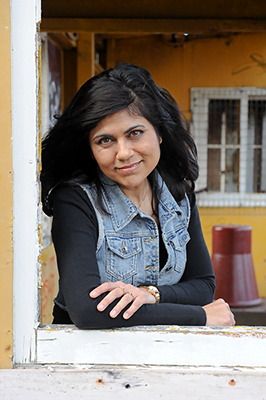
Case study: Veena Sahajwalla
Scientia Professor Veena Sahajwalla is somewhat of a hero in Australian waste circles. The founder/director of the UNSW Centre of Sustainable Materials Research and Technology (SMaRT Centre) is the driving force behind successes like the MICROfactories system (on which there is more below), and materials as diverse as green steel, green ceramics and urban waste. Prof. Sahajwalla was named the 2022 NSW Australian of the Year and a Centenary Hero by Engineers Australia in 2019, and you may have seen her on Australian Story, War on Waste or Catalyst. There’s even a biography for primary-age kids coming out later this year, announcing Prof. Sahajwalla as an “Aussie STEM Star”.
The professor’s success has come through focusing on the local reuse of high-value waste products, and developing systems where, as she explains, “looking after each other is looking after each other’s jobs … looking after a local manufacturer who can create jobs locally.” Ultimately, she asks, “Does everything have to be [being] about bigger and better, [using] economies of scale, [and achieving the] lowest possible cost—or about ‘economies of purpose’?”
Sahajwalla’s 2021 appointment to the Steering Committee of the Federal Government’s Sustainable Communities and Waste Hub will put her in a prime position to push an economy of purpose at a national level, while integrating the contributions of industry and community.
A key milestone on Prof. Sahajwalla’s path is green steel. In conjunction with the SMaRT Centre, she invented polymer injection technology, which allows for the replacement of the non-renewable coking coal used in electric arc furnace (EAF) steelmaking. The technology allows “green” furnaces to burn waste plastic and the carbon from shredded tyres instead. This innovation won Prof. Sahajwalla the prestigious Eureka Prize in 2005.
The SMaRT Centre’s current industry partner for green steel production is Molycop, based in Newcastle; this industry leader has also become a member of Tyre Stewardship Australia and is collecting its own supply of end-of-life tyres (see Renew 159). In recent developments, the SMaRT Centre has found waste coffee grounds and hydrogen-from-waste can also be used as coke replacements. As Prof. Sahajwalla says, “The SMaRT Centre is all about being at the forefront at this space—science, engineering, technology, manufacturing—delivering impacts [that are] good for our people and our planet.”
Another key achievement is the trademarked MICROfactorie, a modular system that processes and re-manufactures waste into commercially viable products. In 2018, an e-waste MICROfactorie was opened at UNSW, which removed valuable metals from the re-usable plastics in tablets and phones. It was followed by a plastics-focused version in 2019. During the pandemic, the SMaRT team used these mini-workshops to repurpose dead printers into face shields for front-line workers at Port Macquarie Hospital.
Other outputs of the MICROfactories include ceramic-style tiles made from glass and textile waste, which have been installed in Mirvac’s Pavilions Residences at Sydney Olympic Park, as well as building panels and filament for feedstock and 3D printing. (See issue 56 of Renew’s sister magazine Sanctuary for more on the SMaRT–Mirvac collaboration.)
For future uses, it’s vital that MICROfactories have a small physical footprint and can operate on or close to building sites or waste-collection areas: this minimises transport needs, capitalises on regional waste sources, and enables local manufacturing. Being modular means MICROfactories are versatile, adaptable and can be operated by cooperatives or in regional hubs co-owned by several businesses.
As Prof. Sahajwalla says, “We’re at the forefront of global solutions with MICROfactories.” She emphasises the SMaRT Centre is “developing products that are highly engineered, value-added products. The first keyword has to be ‘engineered’… because without that you don’t realise that it takes a lot of science and engineering to deliver value.” It is this level of technical nous that is needed to roll out the safe, cost-effective waste-to-value solutions that modern Australia needs. — Jodie Lea Martire
Further reading
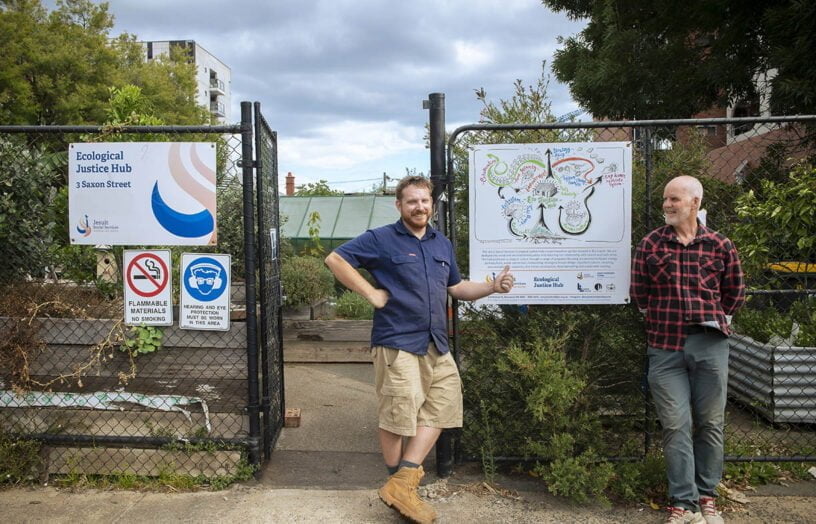 Reuse & recycling
Reuse & recycling
Community eco hub
Nathan Scolaro spends 15 minutes with Stuart Wilson and Michael McGarvie from the Ecological Justice Hub in Brunswick, Melbourne.
Read more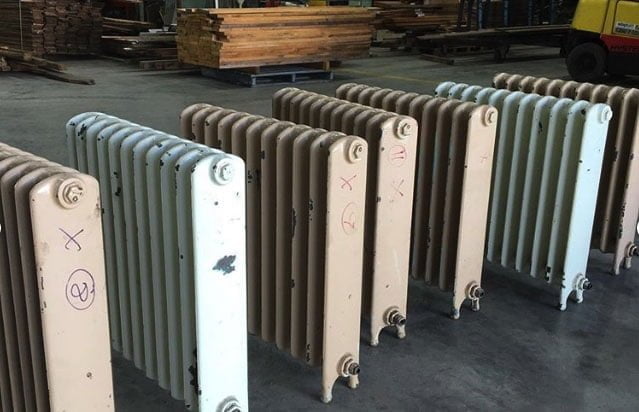 Reuse & recycling
Reuse & recycling
Recycled hydronic heat
Renew’s sustainability researcher Rachel Goldlust gives us a view of and from the Salvage Yard.
Read more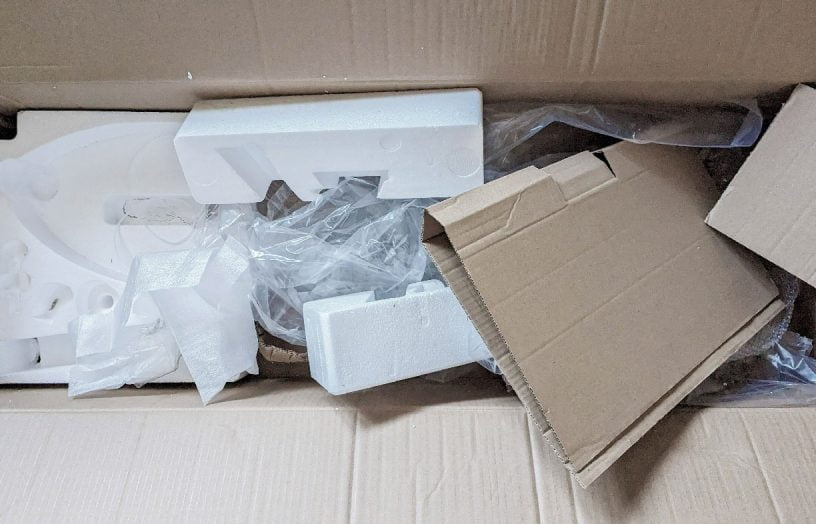 Reuse & recycling
Reuse & recycling
The future of packaging
Packaging comes with just about everything we consume, with far-reaching implications for us and the planet. Jane Hone asks how we can get a handle on it.
Read more
